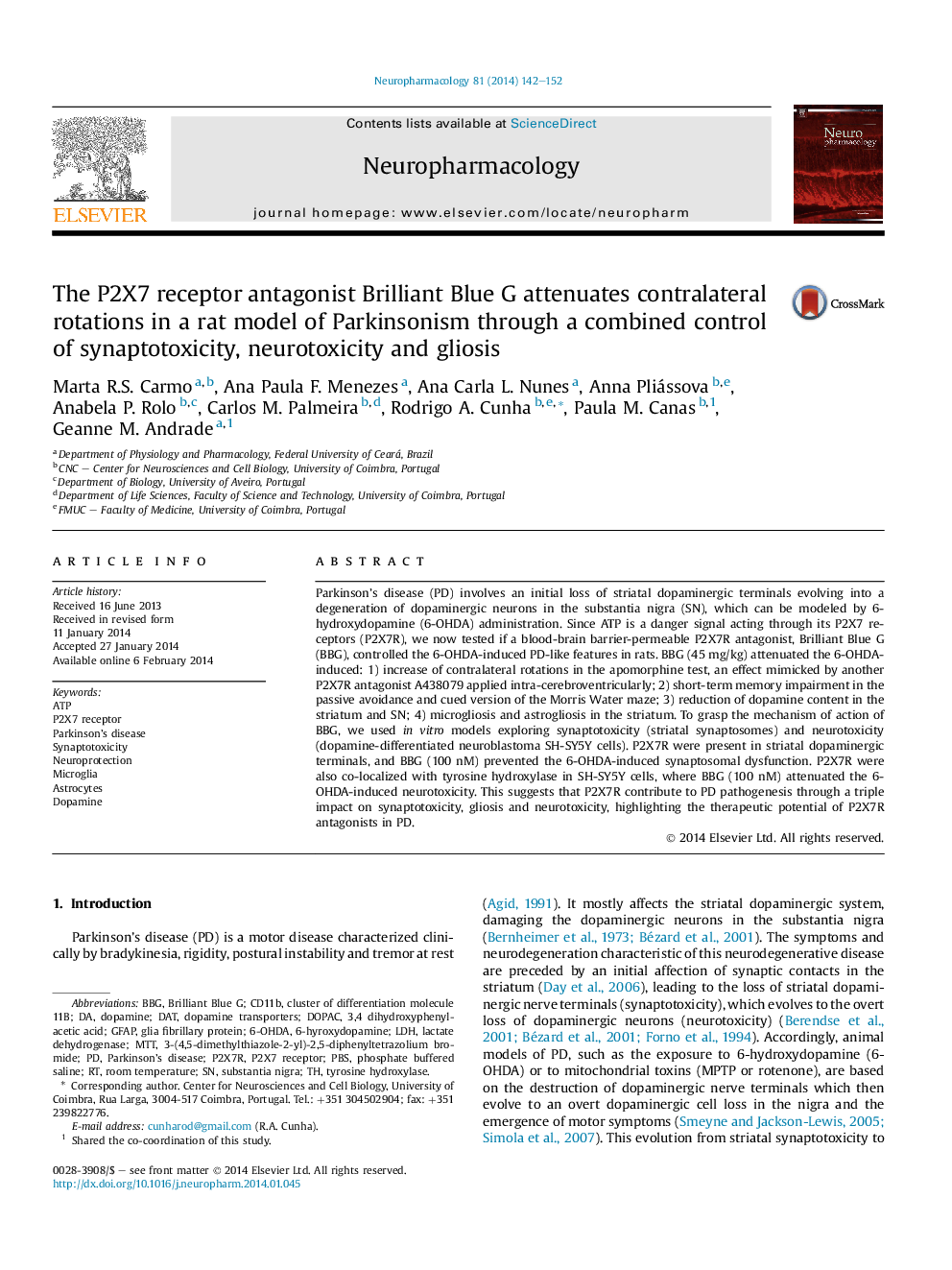| کد مقاله | کد نشریه | سال انتشار | مقاله انگلیسی | نسخه تمام متن |
|---|---|---|---|---|
| 2493240 | 1556633 | 2014 | 11 صفحه PDF | دانلود رایگان |

• P2X7 receptor antagonism attenuates rotational behavior in PD models.
• P2X7 receptor antagonism blunts dopaminergic deficits in PD models.
• P2X7 receptor antagonism directly prevents neuronal damage in PD models.
Parkinson's disease (PD) involves an initial loss of striatal dopaminergic terminals evolving into a degeneration of dopaminergic neurons in the substantia nigra (SN), which can be modeled by 6-hydroxydopamine (6-OHDA) administration. Since ATP is a danger signal acting through its P2X7 receptors (P2X7R), we now tested if a blood-brain barrier-permeable P2X7R antagonist, Brilliant Blue G (BBG), controlled the 6-OHDA-induced PD-like features in rats. BBG (45 mg/kg) attenuated the 6-OHDA-induced: 1) increase of contralateral rotations in the apomorphine test, an effect mimicked by another P2X7R antagonist A438079 applied intra-cerebroventricularly; 2) short-term memory impairment in the passive avoidance and cued version of the Morris Water maze; 3) reduction of dopamine content in the striatum and SN; 4) microgliosis and astrogliosis in the striatum. To grasp the mechanism of action of BBG, we used in vitro models exploring synaptotoxicity (striatal synaptosomes) and neurotoxicity (dopamine-differentiated neuroblastoma SH-SY5Y cells). P2X7R were present in striatal dopaminergic terminals, and BBG (100 nM) prevented the 6-OHDA-induced synaptosomal dysfunction. P2X7R were also co-localized with tyrosine hydroxylase in SH-SY5Y cells, where BBG (100 nM) attenuated the 6-OHDA-induced neurotoxicity. This suggests that P2X7R contribute to PD pathogenesis through a triple impact on synaptotoxicity, gliosis and neurotoxicity, highlighting the therapeutic potential of P2X7R antagonists in PD.
Journal: Neuropharmacology - Volume 81, June 2014, Pages 142–152